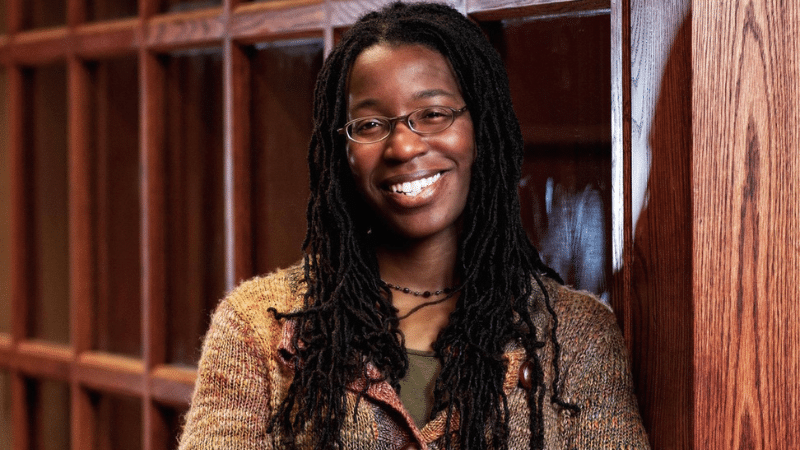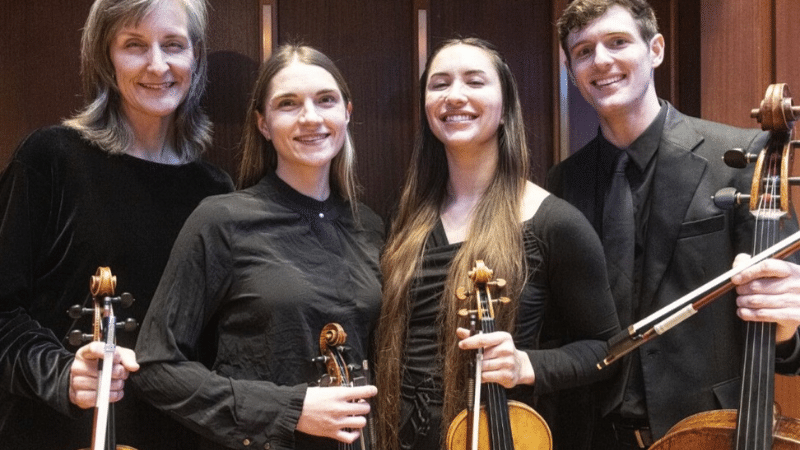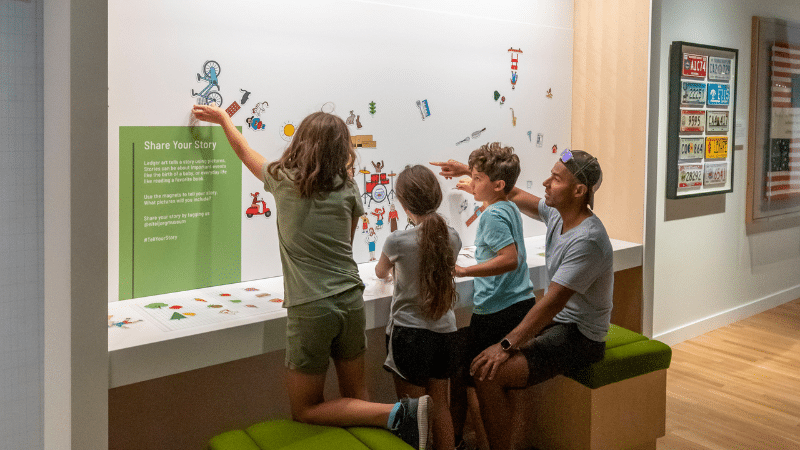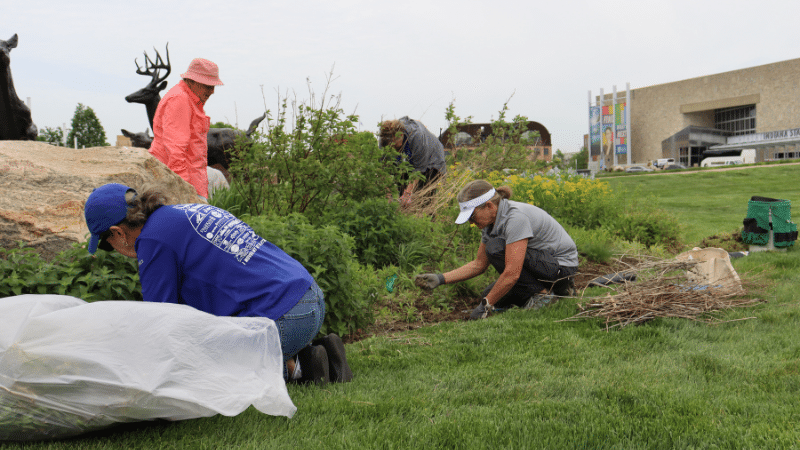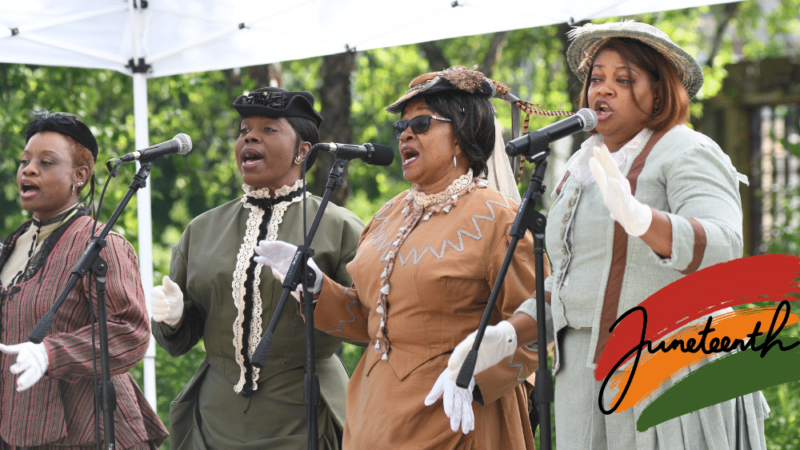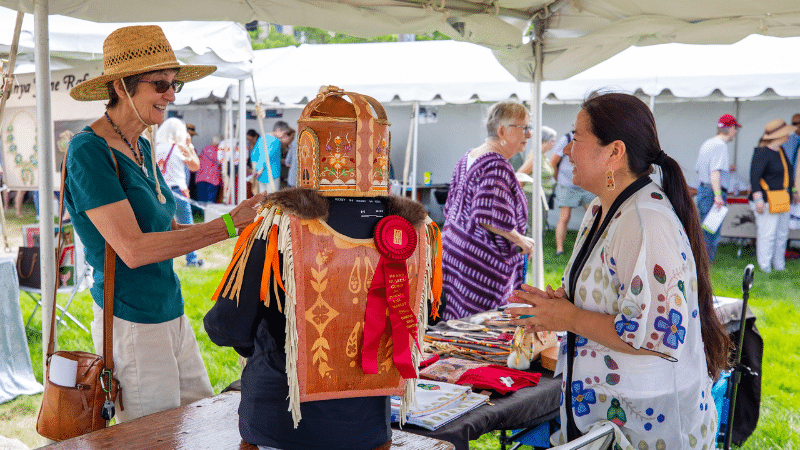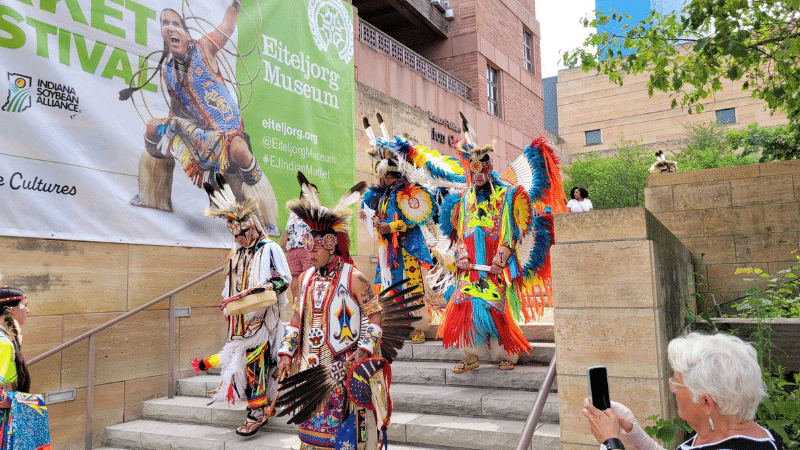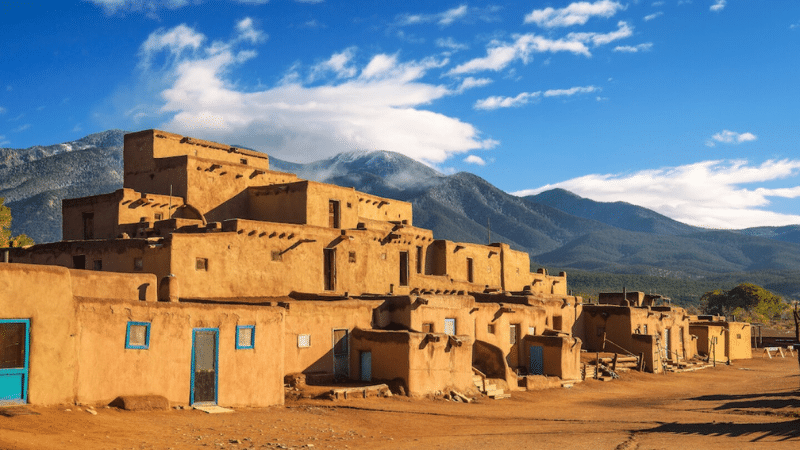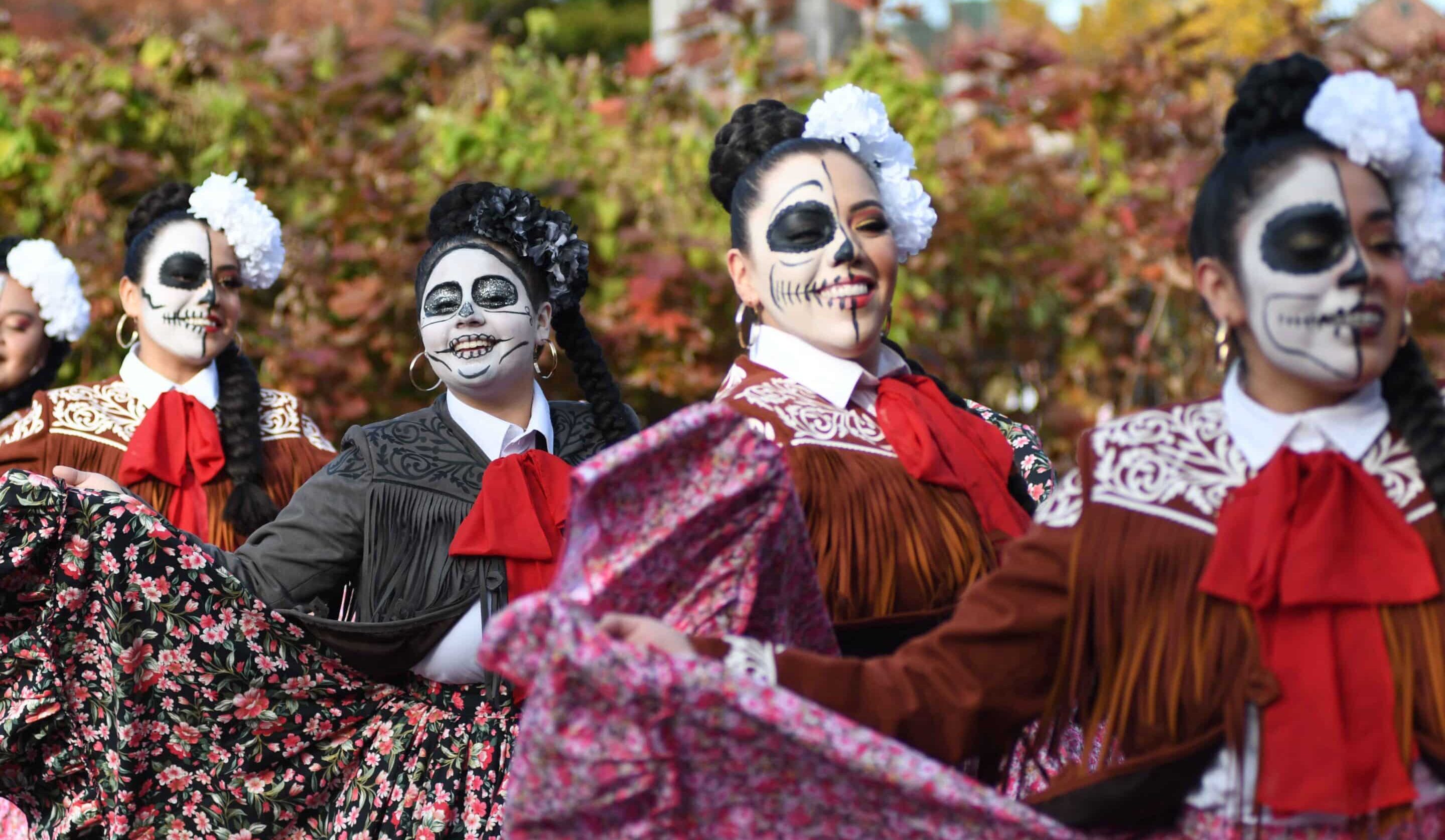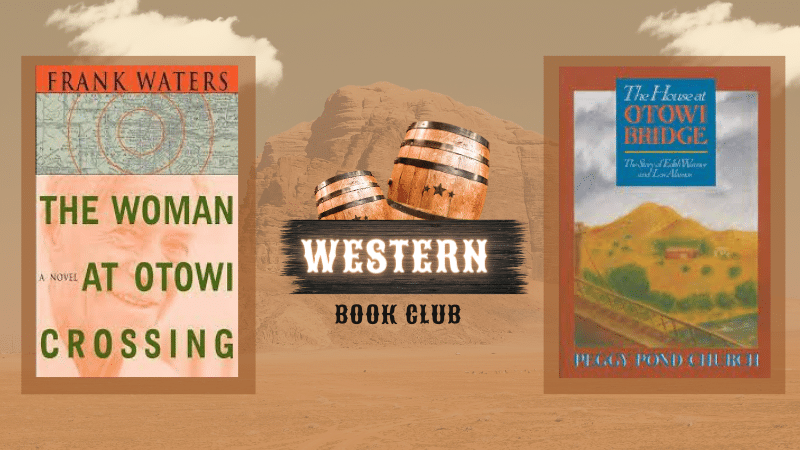Traveling exhibit shares poignant photography of mid-20th century Kiowa life
By Dorene Red Cloud (Oglala Lakota), assistant curator of Native American art
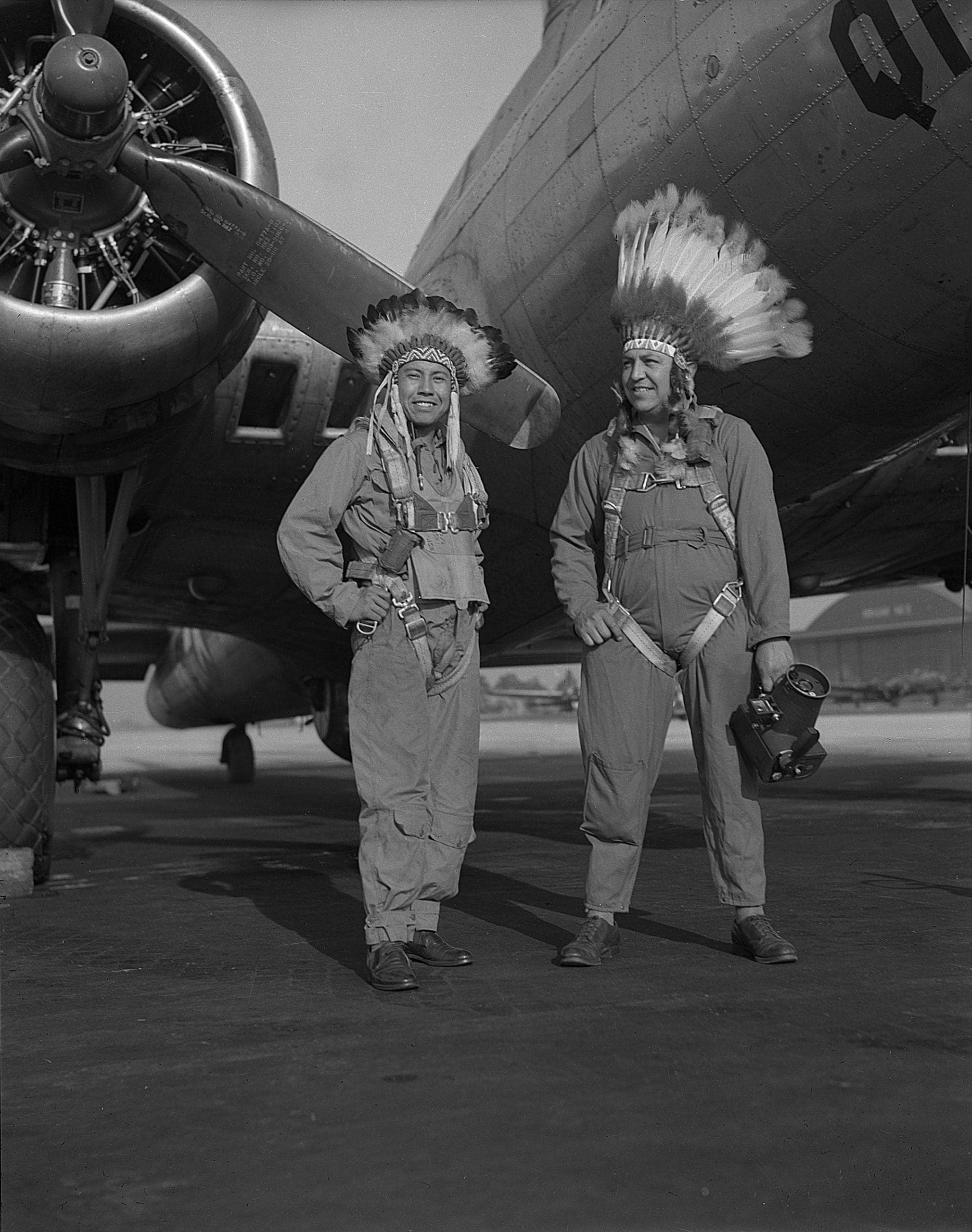
Caption: Gus Palmer (Kiowa, at left), side gunner, and Horace Poolaw (Kiowa), aerial photographer, in front of a B-17 Flying Fortress. MacDill Field, Tampa, Florida, ca. 1944. © Estate of Horace Poolaw.
In May 2019, the Eiteljorg Museum opened For a Love of His People: The Photography of Horace Poolaw, a traveling exhibition on loan from the Smithsonian Institution’s National Museum of the American Indian.
This exhibit features more than 75 black-and-white photos taken by Kiowa photographer Horace Poolaw (1906-1984). Poolaw’s subjects, who are mostly friends and family, detail the lives of mid-century Native Americans of the Southern Plains. Weddings, parades, various gatherings and military recruits in their uniforms are among the poignant moments Poolaw depicted.
Included in the unique and inspiring events he photographed were the first Native American-operated inter-tribal events, the American Indian Exposition (or Indian Fair) held annually in Anadarko, Oklahoma, and the Craterville Indian Fair. Poolaw included the landscape and surroundings in his photos; and it is a realistic and natural depiction of the people and their environment from the 1920s through the 1970s. Unlike the documentation of Native peoples by non-Native photographers, there are no nostalgic attempts to memorialize a forgotten past of the “American Indian.”
Poolaw was born near Mountain View, Oklahoma, in the traditional homelands of the Kiowa people; and Kiowa was his first language. In his early teens, Poolaw began taking photographs. His formal training began at age 16, when he apprenticed under photographers George Long and John Coyle. At the time, photography was an expensive medium; therefore Poolaw taught himself the process of developing his own photographs to make them just right, thereby ensuring he did not waste any film. On the postcards that he sold in the 1920s, he applied a stamp that read, “A Poolaw Photo, Pictures by an Indian.” For later photos, the stamp was revised to “Poolaw Photos, Anadarko, Oklahoma.”

Caption: Left to right: Juanita Daugomah Ahtone (Kiowa), Evalou Ware Russell (center), Kiowa Tribal Princess, and Augustine Campbell Barsh (Kiowa) in the American Indian Exposition parade. Anadarko, Oklahoma, 1941. © Estate of Horace Poolaw.
For a Love of His People: The Photography of Horace Poolaw is organized by the Smithsonian Institution’s National Museum of the American Indian. The exhibition was curated by Tom Jones (Ho-Chunk) and Nancy Marie Mithlo (Chiricahua Apache).
Co-curator Jones — who is a contemporary photographer and University of Wisconsin assistant professor — and his students took high-resolution scans of Poolaw’s negatives and cleaned and printed them to create this exhibition. For a Love of His People is on view in the Eiteljorg Museum’s second floor Hurt and Harvey galleries through Aug. 9, 2020.
FOR A LOVE OF HIS PEOPLE: THE PHOTOGRAPHY OF HORACE POOLAW
A traveling exhibit of the Smithsonian Institution’s National Museum of the American Indian
MAY 18, 2019–AUG. 9, 2020
Eiteljorg Museum, Hurt and Harvey galleries
Sponsored by:
Capital Group
Ice Miller LLP
Barnes & Thornburg LLP
The Boren Foundation
Care Institute Group, Inc.
Sycamore Advisors LLC
Roberts Camera
Printing Partners
Anonymous
This article originally appeared in the June 2019 issue of Storyteller magazine


